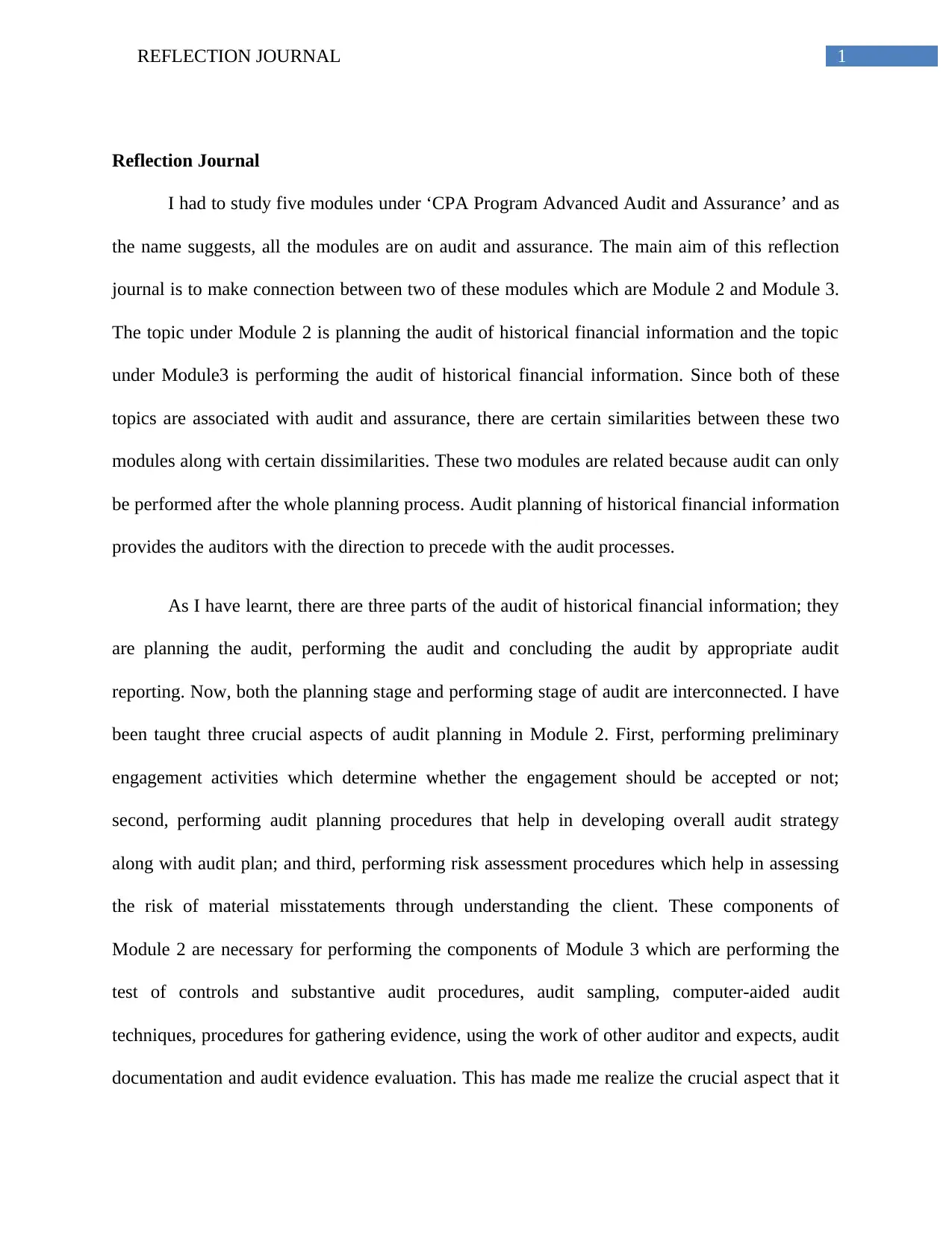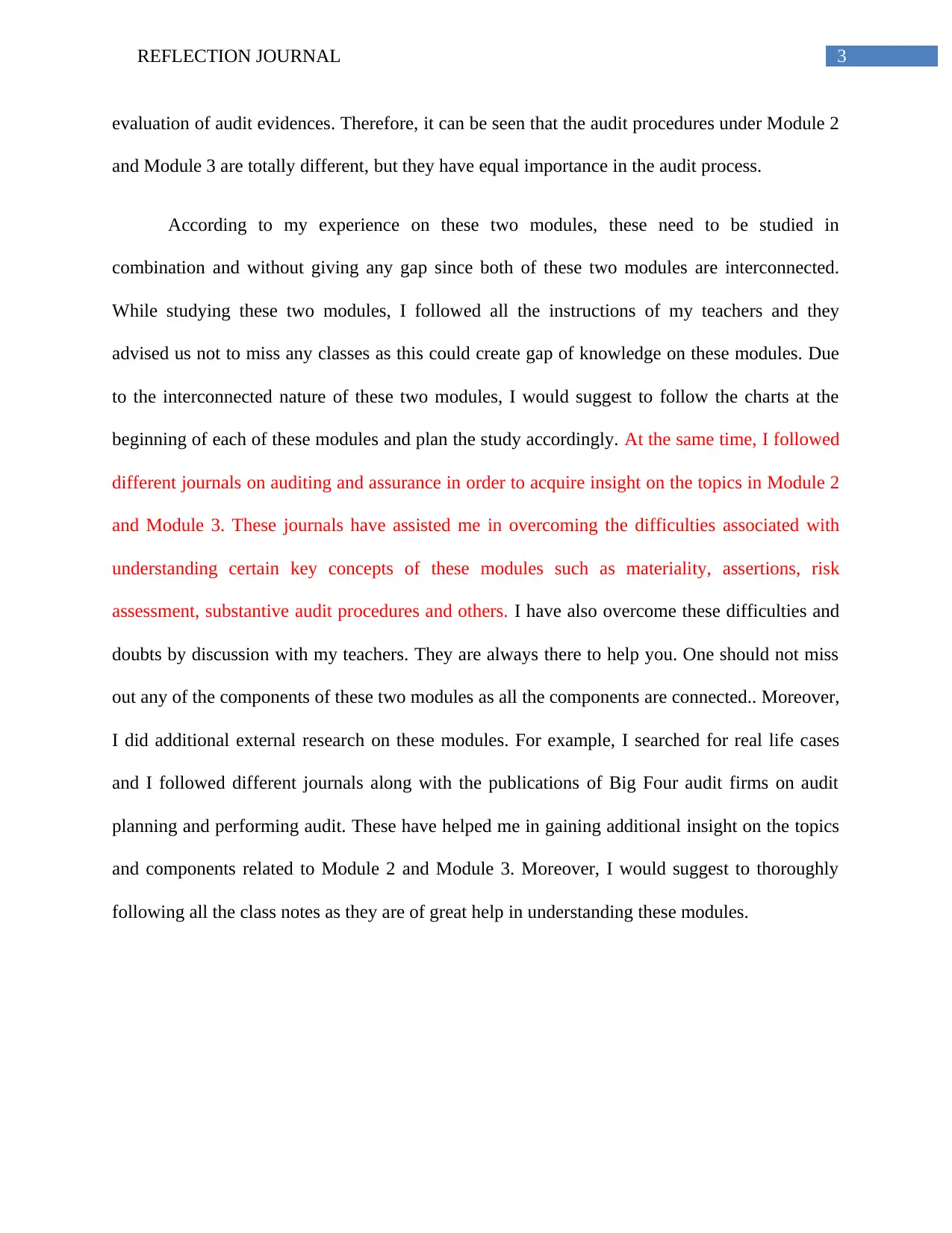Reflection Journal: Comparing Audit Planning and Performing
VerifiedAdded on 2022/08/29
|4
|1013
|21
Journal and Reflective Writing
AI Summary
This reflection journal analyzes the relationship between Module 2 (Planning the Audit) and Module 3 (Performing the Audit) within the CPA Program's Advanced Audit and Assurance curriculum. The student explores the interconnectedness of these modules, highlighting that effective audit performance relies on comprehensive planning, including preliminary engagement activities, audit planning procedures, and risk assessment. The journal emphasizes the importance of understanding materiality and financial statement assertions as crucial elements in both planning and execution. It also acknowledges the differences in auditing standards and focus areas between the two modules while stressing the need for studying them concurrently. The student shares personal study strategies, including following instructors' guidance, utilizing audit journals, and conducting external research, to overcome challenges and gain a deeper understanding of key concepts. The journal concludes by recommending a combined study approach and the use of available resources to enhance learning in advanced auditing and assurance.
1 out of 4











![[object Object]](/_next/static/media/star-bottom.7253800d.svg)